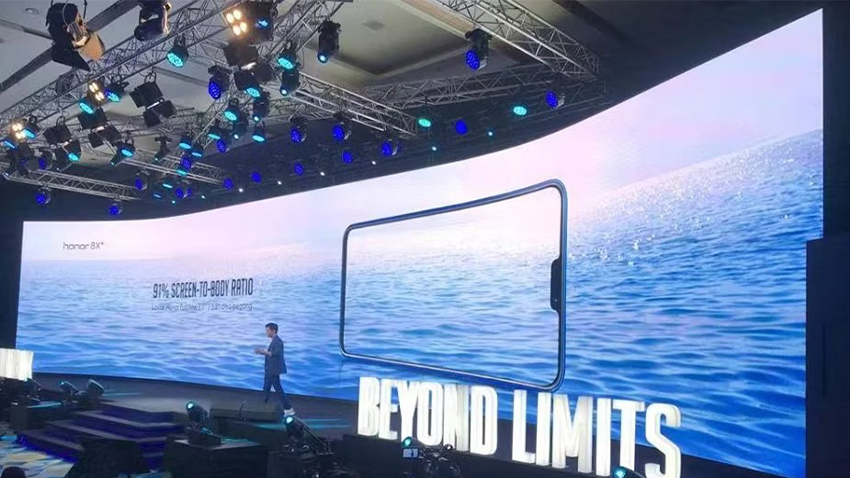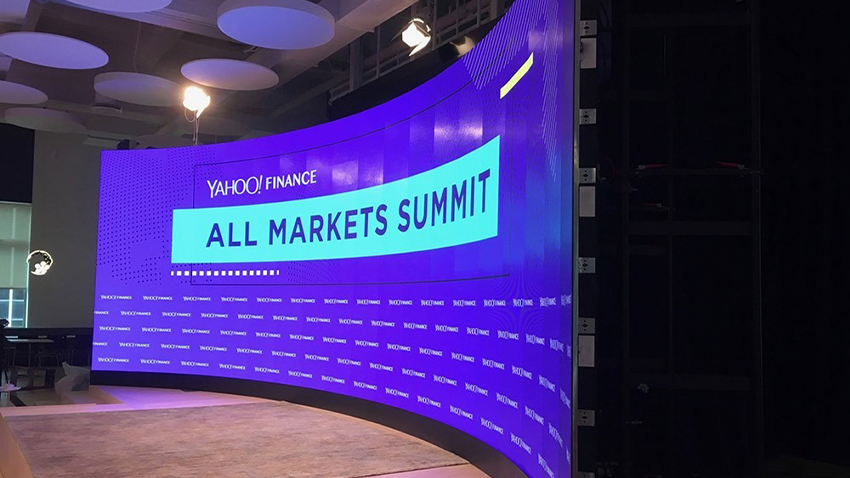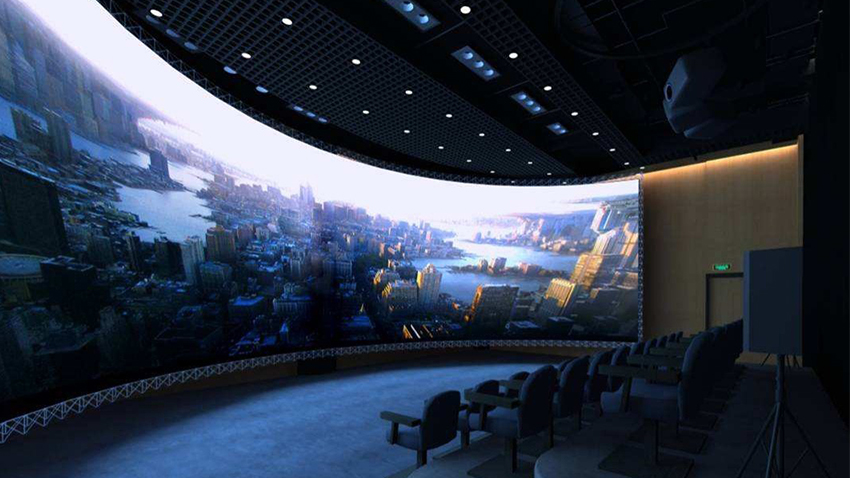1. Introduction
The global curved LED screen market is expanding at an annual growth rate of 12% (Source: TrendForce 2023). From concert stages to aerospace command centers, curved LED displays are breaking the limitations of traditional flat panels through their unique arc designs, delivering broader viewing angles and immersive visual experiences. This article provides an in-depth analysis of their technical principles, application scenarios, and purchasing strategies to help readers fully master this cutting-edge technology.
2. What is Curved LED Screen Display?
Definition & Core Principles
Utilizing flexible PCB substrates + curved cabinet structures to achieve screen curvature, with modular splicing technology enabling customizable concave, convex, and wave-shaped configurations.
Three Key Differences from Flat LEDs
| Comparison Criteria | Flat LED | Curved LED |
| Visual Experience | Central focus | 120 °+ wide-angle wraparound |
| Optical Uniformity | Edge brightness decay | Curvature-compensated color consistency |
| Installation Flexibility | Flat arrangements only | 3D spatial configurations |
3. Five Core Advantages of Curved LED Video Wall

3.1 Immersiveness
Matching human eye’s natural 160° horizontal/130° vertical FOV, reducing peripheral blind zones. Case: IMAX theater curved screens boost immersion by 40%.
3.2 Uniformity
Curvature compensation algorithms improve overall image consistency by 30%, eliminating edge brightness/color shifts.
3.3 Space Efficiency
Arch-conforming designs adapt to architectural structures (columns, atriums), enhancing visual impact while saving space.
3.4 Commercial Value
Curved retail LED displays achieve 58% higher customer dwell rate vs flat screens (Source: RetailDive 2022), significantly boosting brand recall.
3.5 Ambient Light Resistance
Concave designs reduce top-light reflections, decreasing outdoor contrast loss by 25%.
4. Six Application Scenarios & Cases

4.1 Stage Performances
270° curved LED screens ensure optimal viewing from all seats for concerts/galas.
4.2 Retail Displays
Curved LED displays attract 23% more attention in brand stores/malls (verified by eye-tracking studies).
4.3 Stadiums
Circular installations enable full-view replays and real-time stats display.
4.4 Control Centers
Concave curved LED walls reduce eye strain for prolonged monitoring sessions.
4.5 Film Production
Real-time virtual background display cuts post-production costs by 35%.
5. Key Technical Parameters
5.1 Pixel Pitch Selection
| Viewing Distance | Recommended Pitch | Applications |
| 0.5-1m | P0.9-P1.2 | Interactive displays |
| 3-5m | P1.5-P2.5 | Retail/meeting rooms |
| 10m+ | P3-P4 | Stadiums/outdoors |
5.2 Curvature Design Principles
Horizontal curvature: R=2.5×screen width
Vertical curvature: ≤15° to prevent distortion
5.3 IP Ratings Guide
| Environment | IP Rating | Key Features |
| Indoor dry | IP43 | Dustproof + splash coating |
| Outdoor standard | IP65 | Full sealing + UV resistance |
| Extreme climates | IP68 | Submersible + -40℃~+85℃ |
6. Maintenance Cost Control
Prioritize front-access maintenance designs
Verify heat dissipation system lifespan: >50,000 hours
7. Installation & Maintenance Guidelines
Standardized Installation
Load-bearing verification (≥2.5× screen weight)
Pre-calibrated frame (±0.5° tolerance)
Module cascade calibration (ΔE<2 color difference)
Smart Maintenance Systems
Remote monitoring: Real-time temp/humidity/voltage tracking
Fault localization: 99.9% accuracy
Cleaning protocol: Nano oil-resistant coating + anhydrous ethanol
8. Conclusion
Curved LED displays are evolving from technological novelties to essential digital infrastructure. With emerging Micro LED and transparent display technologies, future curved screens will become ultra-thin, flexible, even rollable. Partnering with experienced curved display manufacturers remains crucial for maximizing commercial potential.
Contact our engineering team now for a free curved LED display screen design solution!
Post time: Mar-24-2025





